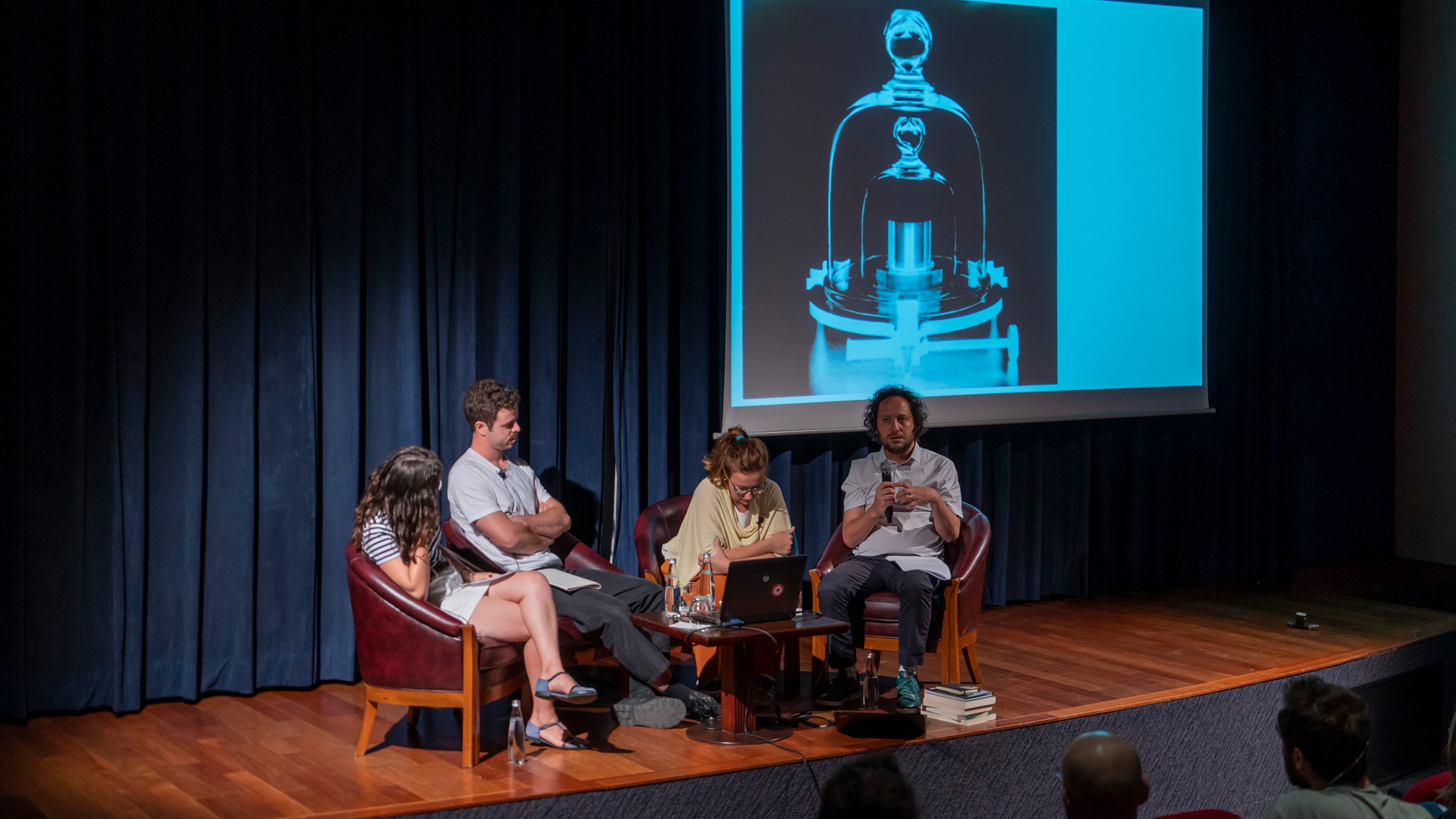September 5 - November 24, 2019
Inspired by its Anatolian Weights and Measures Collection, Pera Museum presented a contemporary video installation titled For All the Time, for All the Sad Stones at the gallery that hosts the Collection. The installation by the artist Nicola Lorini took its starting point from recent events, in particular the calculation of the hypothetical mass of the Internet and the lost of weight of the model of the kilogram and its consequent redefinition, and traces a non-linear voyage through the Collection.
Keeping a constant tension between material production and the interpretation and transmission of information, For All the Time, for All the Sad Stones aimed to question models of thought towards a post anthropocentric understanding of time and history. Questioning the abstract definitions of materials and daily objects which are becoming concepts with the raise of the digital, the installation was centered around a video with sound, and includes a set of sculptural objects made of different materials including sand, silicone and deer bones.
About Nicola Lorini
Nicola Lorini (Como, 1990), lives and works between Milan and London. He studied Fine Arts at Central Saint Martins College of Art and Design, London, and product design at Politecnico di Milano and at the Utrecht School of the Arts, The Netherlands. In recent years he has been involved in projects with the Warburg Institute, London; British Museum, London; UAL, London; Tokyo University of the Arts, Tokyo. Recent solo and group exhibitions include: Cold Stories, Rehearsal, Milan, IT; Insonne, Sonnenstube, Lugano, CH; Placido, Dimora Artica, Milan, IT; Stand By Me, Pelagica, Milan, IT; Bonis Bona, Malis Mala, t-space, Milan, IT; Every Me, Adana Archeology Museum, Adana, TR; Take Me Out, 97 Graham Road, London, UK; Metadata, Lethaby Gallery, London, UK; Annihilation Event (prototype), Tate Modern Switch House, London, UK; Taiyr, ex chiesa di San Pietro in Atrio, Como, IT; Complex Topography, Ritsurin Garden, Takamatsu, JP.

Pera Museum presents a talk on the video installation For All the Time, for All the Sad Stones, inspired by the Anatolian Weights and Measures Collection. According to the philosopher Marquis de Condorcet, the metric system which was presented in 1799 in France, was “for all people for all time”. The metric unit for mass, the kilogram was modeled based on a platinium-iridium object in 1889. However, the weight of this object changed 50 micrograms in the past 129 years. The International Bureau of Weights and Measures organized a summit to discuss the future of the metric system In November 2018. Kilogram is now standardized according to the Planck constant.

Inspired by its Anatolian Weights and Measures Collection, Pera Museum presents a contemporary video installation titled For All the Time, for All the Sad Stones at the gallery that hosts the Collection. The installation by the artist Nicola Lorini takes its starting point from recent events, in particular the calculation of the hypothetical mass of the Internet and the weight lost by the model of the kilogram and its consequent redefinition, and traces a non-linear voyage through the Collection.

Pera Museum presented a talk on Nicola Lorini’s video installation For All the Time, for All the Sad Stones, bringing together the artists Nicola Lorini, Gülşah Mursaloğlu and Ambiguous Standards Institute to focus on concepts like measuring, calculation, standardisation, time and change.

I remembered a game as I was waiting in the passenger lounge for the ferry to arrive just a few minutes ago. A game we used to play at home when I was young, in my country that is very far away from here, a relic from the distant past; I don’t even remember how we used to play it. The kind of game that makes me feel a thousand times lonelier than I already am among the crowd waiting to get on the ferry.
Tuesday - Saturday 10:00 - 19:00
Friday 10:00 - 22:00
Sunday 12:00 - 18:00
The museum is closed on Mondays.
On Wednesdays, the students can
visit the museum free of admission.
Full ticket: 300 TL
Discounted: 150 TL
Groups: 200 TL (minimum 10 people)